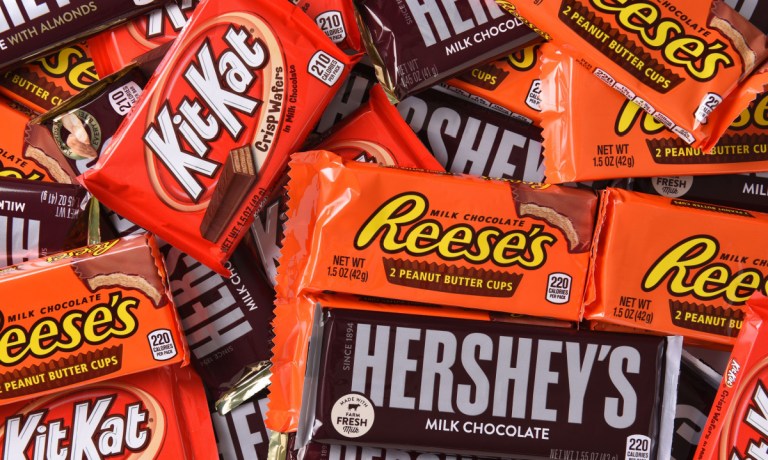
For a long time, candy brands maintained that chocolate was an affordable luxury, one that consumers would continue to spring for even as prices rose, but now Hershey is finding the limits of what shoppers are willing to pay for a bar of chocolate.
The Hershey Company, the snacks and confectionery giant behind its self-titled brand, Reese’s, Twizzlers and many others, shared in its second-quarter FY 2023 earnings report Thursday (July 27) that, in its North America Confectionery segment, organic volume/mix was down 4%.
On a call with analysts discussing these results, Hershey Senior Vice President and Chief Financial Officer Steve Voskuil noted that the ongoing volume challenges that the company expects for the rest of the year largely are a result of price increases.
“The volume impact really is driven by the extra price impact, … and as we look at volume in the back half, yes, year-over-year, we expect it to be down, but it really is price driven,” Voskuil said.
These comments seem to mark a shift from Hershey’s contention earlier this year that chocolate sales remain resilient in spite of rising prices, providing consumers with an affordable luxury in a challenging time.
“Chocolate and Salty Snacks, rank as two of the top three resilient treats that consumers are not willing to forgo,” Hershey Company CEO Michele Buck had said back in February.
Yet it seems that, after a certain point, even chocolate fans are being forced to cut back. PYMNTS research finds that consumers are sacrificing food items that they do not strictly need. According to data from PYMNTS’ May report, “Consumer Inflation Sentiment Report: Consumers Cut Back by Trading Down,” which drew from a spring survey of more than 2,000 U.S. consumers, the majority — 57% — of shoppers have cut down on spending on nonessential grocery products.
In addition to volume challenges, Hershey also saw its share of total candy, mint and gum sales decline slightly. Yet it seems that not all candy companies are seeing the same challenges. Also Thursday, Nestlé reported its results for the first half of 2023, and the company noted that its confectionery business saw organic sales growth of about 11%.
Still, Nestlé did see a “slowdown” on confectionery in the second quarter, as Executive Vice President and Chief Financial Officer François-Xavier Roger told analysts on a call.
“But if we look at it, the business is very healthy. … We gained market share. … Don’t read Q2 for what it doesn’t mean, and the trend continues to be very positive,” Roger maintained.
According to U.S. Bureau of Labor Statistics (BLS) data retrieved from the Federal Reserve Bank of St. Louis, chocolate prices for consumers are up about 11% year over year, nearly twice as large as the overall consumer food inflation rate of 5.7%.
To bring consumers back, Hershey is planning on stepping up its deals and discounts. Buck told analysts in her prepared remarks Thursday that the company will undertake “targeted increases in promotional activity in 2024 to return merchandising share to historical levels.”